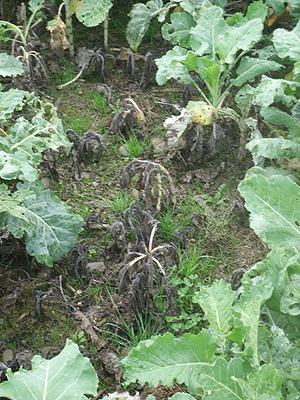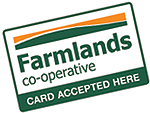You may have noticed this year Specialty Seeds have been providing information and tips to help you make good decisions on farm health and safety issues. We hope these have been of some help.
Recently 'The Independent Taskforce on Workplace Health and Safety' have presented their report to government on workplace safety.
Unfortunately as many of you know, farming as an industry has a poor history with health and safety issues and this is mentioned in the report.
Take time to read some (in particular the "Recommendation" section - page 4) of this report as I believe many of these recommendations will end up being adopted.
to download and read the 'Workplace Health and Safety report' about what is being suggested by the taskforce.
Back to top
 Management of 2nd year (and older) Kale crops
Management of 2nd year (and older) Kale crops
Last summer was a very difficult one for most farmers throughout New Zealand owing to the dry spell we endured. Of the hardest hit crops the dry land winter brassica crops suffered the most I believe.
After talking to our clients throughout New Zealand it appears the yields have been well below expectations. Given the stressed nature of the plants many have noticed that during these dry spells not only do the crops suffer severe moisture stress but insect and disease problems tend to be bigger issues as well.
This year I particularly noticed the 2nd/3rd (or greater) year kale crops being attacked by Phoma (dry rot) caused by Leptosphaeria
maculans. Many of you may have noticed some of your crops may have looked like the kale crop in the photo below?
Kale is one of the most disease resistant winter green feed crops available and provided good control methods are followed 2nd/3rd year crops work well even if you have had some dry rot appear in your paddocks this last season.
 Dry Rot
Dry Rot
Dry rot is easily identified initially on the leaf area by green-grey dots (fruiting bodies) 3-5 mm expanded light brown-grey centre, darker at margin, yellow halo Infected leaves which eventually die.
Damage is also noticed on the lower stem by cracked lesions eventually the stems will break off at the lesion also black dots appear on the stem as well.
Dry rot is primarily spread by ascospores released from fruiting bodies - they are windborne and released during rain showers/high humidity, spores can travel 1-2 kilometres following rain. Secondary spread is by fallen infected leaf material onto stem as well as systemic growth from leaf lesions onto the stem. Dry rot is extremely destructive and will often cause 100% crop loss in cases I have seen.
Dry Rot Control
Dry rot overwinters in last season's infected crop residue and best and only effective control is achieved by using good cultivation methods to completely bury this crop residue.
If your paddock suffered from dry rot issues last season do not use direct drilling or minimal cultivation to establish your new seasons kale crops. Unless you completely bury the trash you will potentially have issues with dry rot.
Currently there are no fungicides registered for the control of dry rot and as early detection is difficult the use of fungicides would normally be of little use.
Contact Link: For more information on dry rot control please
contact Specialty Seeds.
Back to top

Back to top
 Corka Kale
Corka Kale

Two years ago we released on to the market our new Corka kale and due to great interest in it we unfortunately sold out of it during the last season. However following a good harvest this year we will have good stocks of Corka this coming season.
To refresh your memory Corka is a highly palatable, intermediate stemmed kale meaning that even at lower sowing rates (< 3 kgs/hectare) it won't produce thick stems typical of the giant types.
Corka also has a very high leaf to stem ratio and it therefore suitable for all stock types including Dairy cows, sheep, beef and deer. Corka also has excellent cool winter hardiness and we would recommend a sowing rate of 5 kgs per hectare.
Below is a picture of Corka doing very well in Mid Canterbury in what was a difficult season.
Website Link: View the
Corka Kale website page.
Download Link: Download the
Corka Kale flyer.
Contact Link: For more information on Corka Kale please
contact Specialty Seeds.
Back to top


As always, we hope this issue has been of some value to you. If you have a comment on this newsletter or anything on our website, please give us a call on our
Freephone: 0800 727 8873, send us an email at:
mail@specseed.co.nz.
Kind Regards

Stephen Finch & David Percival
Specialty Seeds - New Zealand
